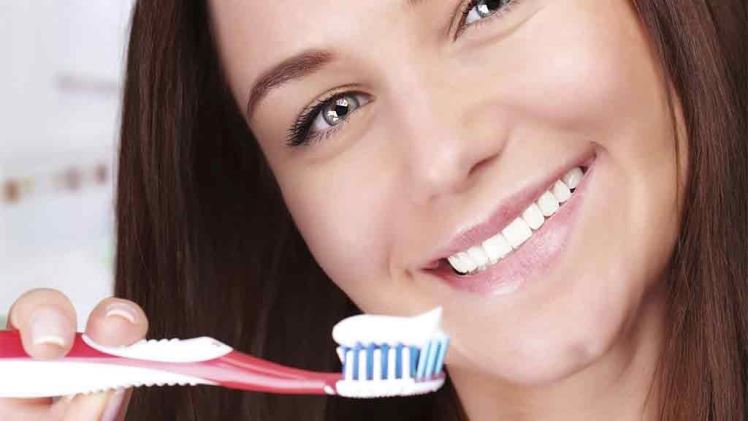The Complete Guide to Hydroxyapatite Toothpaste for Sensitive Teeth

When it comes to oral care, the words “revolutionary” and “game-changer” don’t often come to mind. But in recent years, a silent hero of dental innovation has emerged: hydroxyapatite (HAp) toothpaste. More than just a dazzling new product on the supermarket shelves, hydroxyapatite toothpaste represents a shift in the way we approach dental sensitivity and oral health as a whole. In this comprehensive guide, we’ll explore the origins of hydroxyapatite tooth paste, its properties, and why it’s become a cornerstone of modern dentistry.
The Science of Hydroxyapatite
Hydroxyapatite is a form of calcium apatite with the formula Ca5(PO4)3(OH), and is the main mineral component of tooth enamel. It’s a naturally occurring mineral that makes up our bones and teeth, giving them their structure and strength. This similarity to our natural tooth structure is the secret sauce behind hydroxyapatite’s effectiveness in dental products.
Understanding Tooth Sensitivity
Tooth sensitivity occurs when the dentin underneath the enamel becomes exposed. Dentin contains tiny nerve fibers that are particularly sensitive to stimuli such as hot, cold, sweet, or sour. This can happen due to:
Injury or Wear: Cracked, chipped, or decayed teeth allow easier access to the dentin.
Receding Gums: If gums recede, the softer cementum is exposed, leading to sensitivity.
Too Much Plaque: Plaque can cause the enamel to erode, exposing the dentin.
How Hydroxyapatite Toothpaste Works
Hydroxyapatite toothpaste’s functionality is where it really shines. Because it’s so similar to natural tooth enamel, it can:
Repair Enamel
Regular use of hydroxyapatite can help remineralize and fill in tiny cracks on the surface of enamel, offering a level of repair that traditional toothpaste can’t rival.
Desensitize Nerve Endings
Hydroxyapatite can also seal exposed dentinal tubules, which are tiny channels that connect to the nerves of the tooth. By covering these tubules, it can effectively reduce sensitivity.
Fight Bacteria
Its mineral makeup means that hydroxyapatite also naturally fights harmful bacteria in the mouth, potentially reducing the risk of cavities and gum disease.
Choosing the Right Hydroxyapatite Toothpaste
Not all hydroxyapatite toothpastes are created equal, so it’s essential to make an informed choice:
Fluoride Content
While fluoride may be a controversial topic, it is an important ingredient in preventing cavities. Ensure that your HAp toothpaste contains the optimal level of fluoride recommended by dental professionals.
It’s essential for HAp toothpaste manufacturers to carefully balance the inclusion of fluoride to maximize its benefits while minimizing potential risks associated with excessive fluoride exposure. Dental professionals typically recommend fluoride concentrations within specific ranges for optimal cavity protection without causing fluorosis or other adverse effects.
By incorporating the optimal level of fluoride alongside hydroxyapatite in toothpaste formulations, manufacturers can provide consumers with a comprehensive oral care solution that harnesses the benefits of both ingredients. This approach ensures that individuals receive effective cavity protection while also benefiting from the remineralizing and enamel-strengthening properties of hydroxyapatite.
Ultimately, maintaining the appropriate fluoride concentration in HAp toothpaste underscores the commitment to evidence-based dental care practices, promoting oral health and overall well-being. Regular consultation with dental professionals can further guide individuals in selecting the most suitable oral care products tailored to their specific needs and preferences.
Additional Ingredients
Look out for other beneficial components like xylitol (a natural sweetener with anti-cavity properties), and consider avoiding harsh detergents like sodium lauryl sulfate, which can contribute to irritation for some users.
Essential Oils and Flavorings
While they can make the toothpaste more palatable, they can also lead to allergic reactions. Know your preferences and sensitivities.
How to Use Hydroxyapatite Toothpaste for Maximum Benefit
It’s not just about the toothpaste you use, but also how you use it that counts:
The Technique
The efficacy of hydroxyapatite is often optimized when used in tandems with gentle brushing—no need to be aggressive, as it’s the frequency and consistency that truly make a difference.
Pairing with Other Oral Health Products
Consider using a hydroxyapatite mouth rinse or even a hyaluronic acid oral gel for those with more extreme sensitivity.
The Future of Hydroxyapatite in Dentistry
As we continue to uncover the natural benefits of hydroxyapatite, it’s likely that we’ll see its application in more than just toothpaste. Dental adhesives, cement, and even orthodontic treatments could soon harness the enamel-like properties of HAp for better patient outcomes.
Current Research and Development
Scientists are looking at how to create synthetic HAp that could be used for various applications in dentistry and orthopedics. The possibilities are endless.
Addressing Common Misconceptions
While hydroxyapatite is generally well-tolerated, it’s not without some myths that need busting:
Not a Replacement for Professional Care
Using HAp toothpaste doesn’t mean you can skip visits to the dentist. It’s still important to see your dental professional regularly for check-ups and cleanings.
Safe for All
Despite being a gentle mineral, some individuals might be sensitive to HAp. Always use any new product cautiously and discontinue use if you experience any adverse reactions.
Eco-Friendly
HAp toothpaste is often marketed as eco-friendly, but always check the packaging and disposal recommendations to ensure it aligns with your sustainability goals.
The Takeaway
Hydroxyapatite toothpaste is a groundbreaking product for those looking to manage dental sensitivity while maintaining oral health. As it continues to gain popularity, it’s important to understand what makes it so special and how to incorporate it effectively into your routine for the best results. Remember, the right dental product can only get you so far—attentive at-home care and regular dental visits are still the best way to keep your smile bright and healthy.





